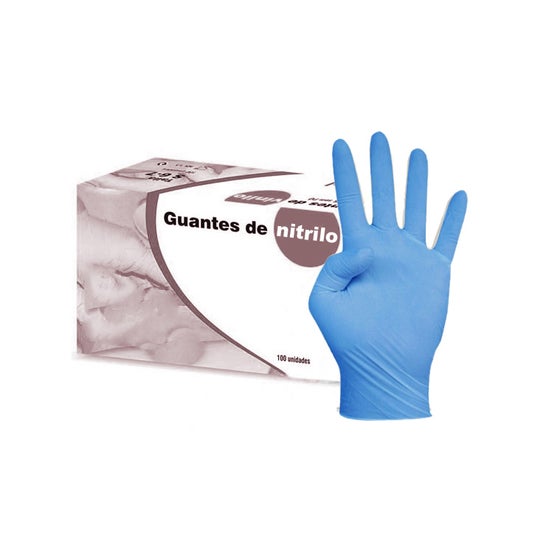Ambidextrous single-use gloves specially designed to reduce the risk of contamination, with reinforced edge to prevent it from rolling up once placed on the hand. Made of nitrile, in blue colour and powder free. Helps reduce the risk of contracting diseases, bacteria or viruses.
Dispomedic Nitrile Gloves Powder Free Medium 100 pcs
6,59€ by redeeming Health points. Log in
![]() Sent from Spain
Show details
Sent from Spain
Show details
Enviado por DocMorris
Provides protection against contamination
Shipping in 24-72h
6,59€ by redeeming Health points. Log in
![]() Sent from Spain
Show details
Sent from Spain
Show details
Enviado por DocMorris
Description
Instructions for use
Cover hands with gloves for cleaning, handling food or toxic products.
Unit price
Pharmaceutical Advice
Nitrile was developed as an alternative to latex to avoid the allergy issues that latex can cause in some people. Nitrile gloves protect the skin from chemicals and are more puncture resistant than latex gloves. This is why they are widely used in healthcare, and they also have good elasticity and adaptability, which provides comfort to the user.
The treatment applied to the inner surface of the gloves reduces the risk of contact dermatitis. This is ideal for people with excessive sweating and low tolerance to powder. Nitrile gloves are also more resistant to friction and wear than other gloves of similar thickness.
There are two types of nitrile gloves:
- Those without textile backing and disposable, used by healthcare professionals (for patient examination, handling instruments and diagnostic tests), by the food industry, hairdressing and beauty salons, etc.
- Those with textile backing, which are used in the industrial, construction and agricultural sector. They perform well with petroleum derivatives (diesel, petrol, etc.), animal, vegetable and mineral oils and fats, and milk and milk derivatives. Also with acid substances, alcohols, aromatic solvents, etc.
Safety and product information
Safety visual aids
At this time we do not have safety images for this product, but we are working on it. We encourage you to check back later for updates. In the meantime, we recommend that you read the safety information that comes with the product before using it. If you have any questions about safety, please do not hesitate to contact us. Also, if you wish, you can also return the product by following our terms and conditions.
Manufacturer details
At the moment we do not have the manufacturer's details, but we are working to add them as soon as possible. We invite you to check back later for updates. If you have any questions, please do not hesitate to contact us, we will be happy to help you.
RELATED SEARCHES ABOUT Accessories
- Flesh wounds
- Repellents
- Hands
- Pillbox
- Bites and stings
- Burns
- First-aid kits and accessories
- Vaseline
- Travel
- Feet
New in First-Aid Kit
- Gestafarma Recipiente Recogida Aséptica 120ml
- Nexcare N1530-1D Papel Adhesivo 25mmx5m 1ud
- Leukoplast Leukomed Skin Sensitive 8x10cm 5uds
- Miteless Protección Ultrasónica Contra Alergias 1ud
- Alvita Agua Purificada 1L
- Calmidine Trolamina 6.7mg Emulsión 200g
- Euroreel Adhesivo Algodón 5mx1.25cm
- Bloom Eléctrico Lavanda Recambio 1ud
- Hansaplast Second Skin Protection XL 3 apósitos
- Hansaplast Second Skin Protection Regular 6 apósitos

